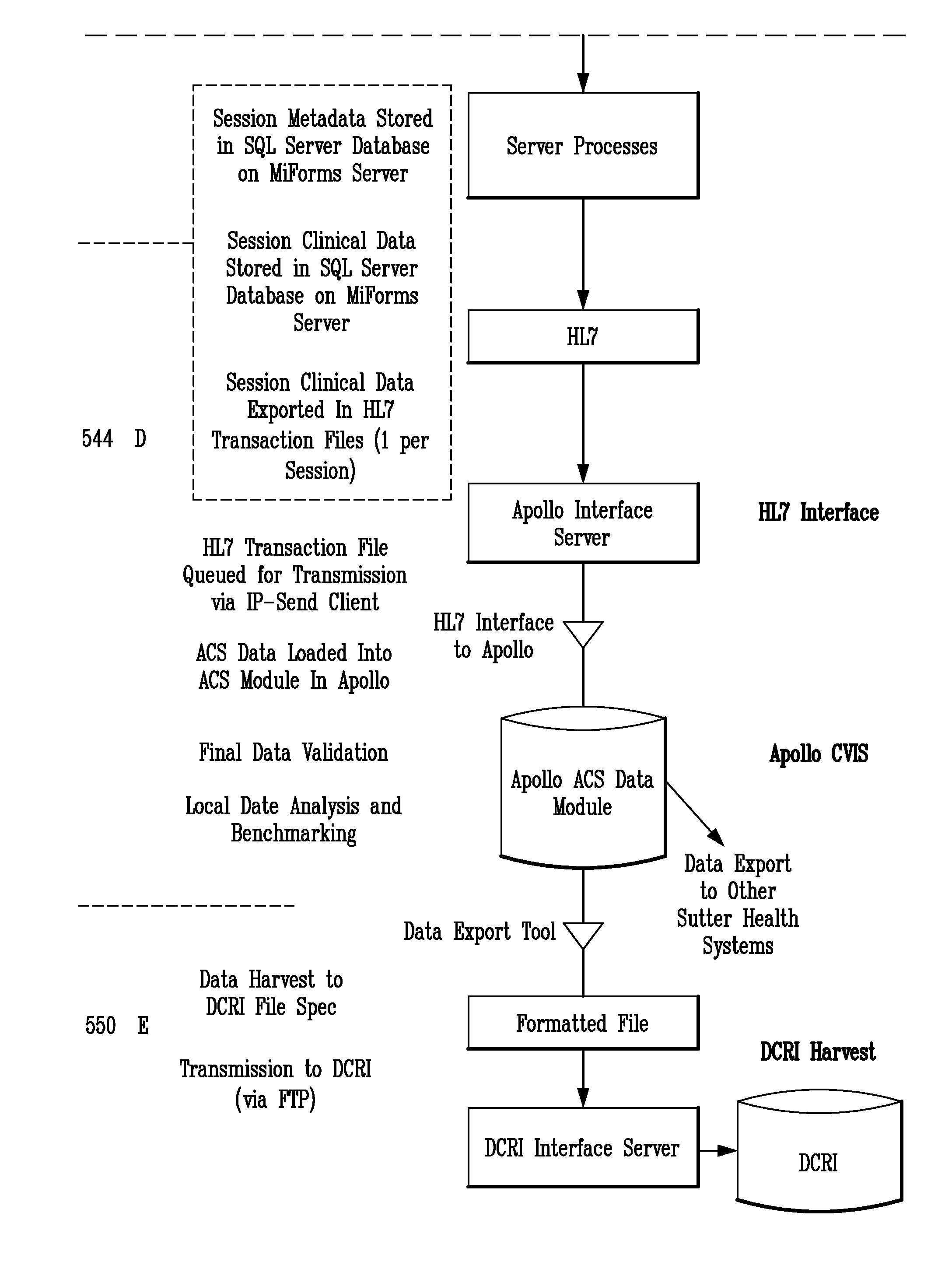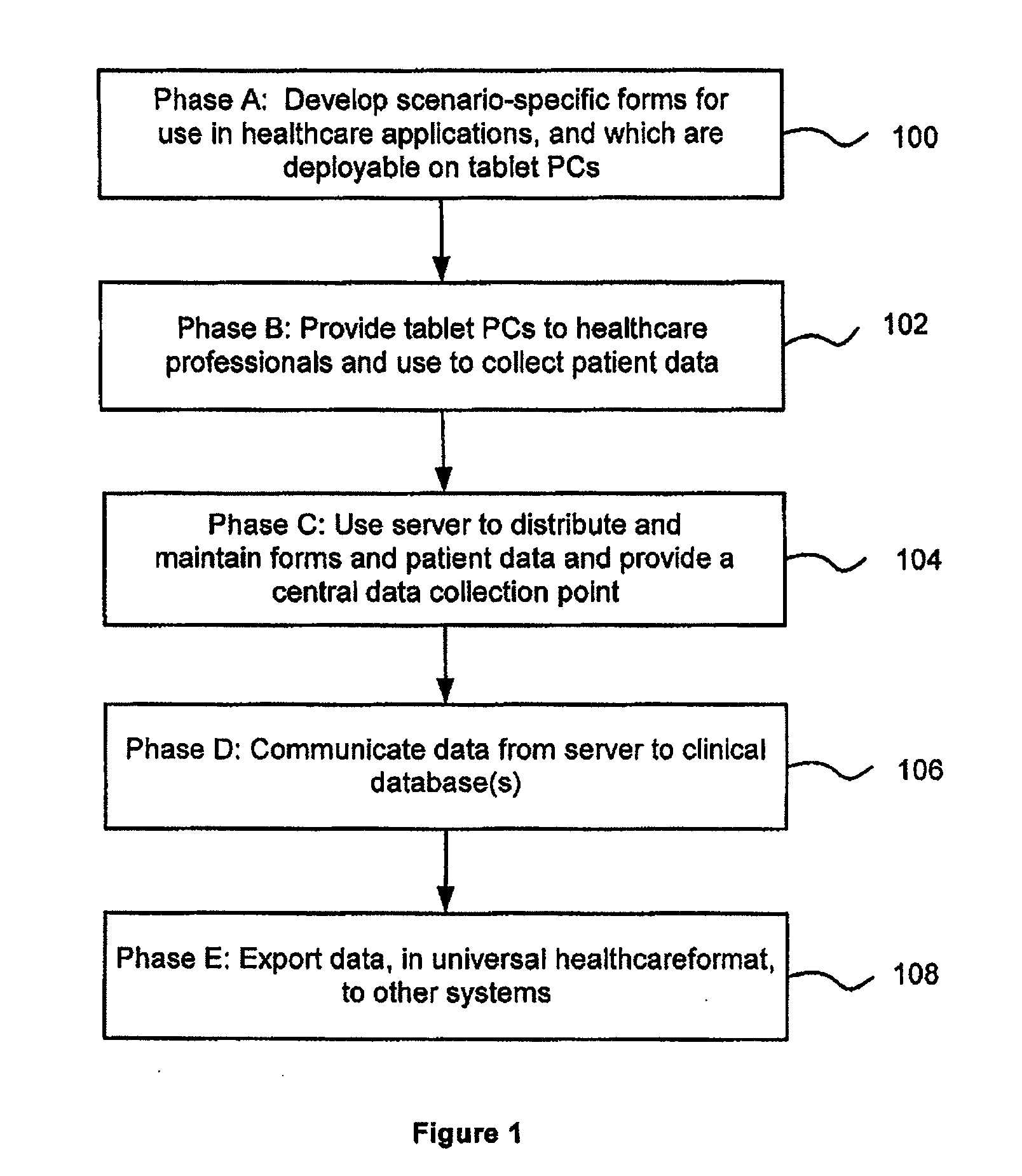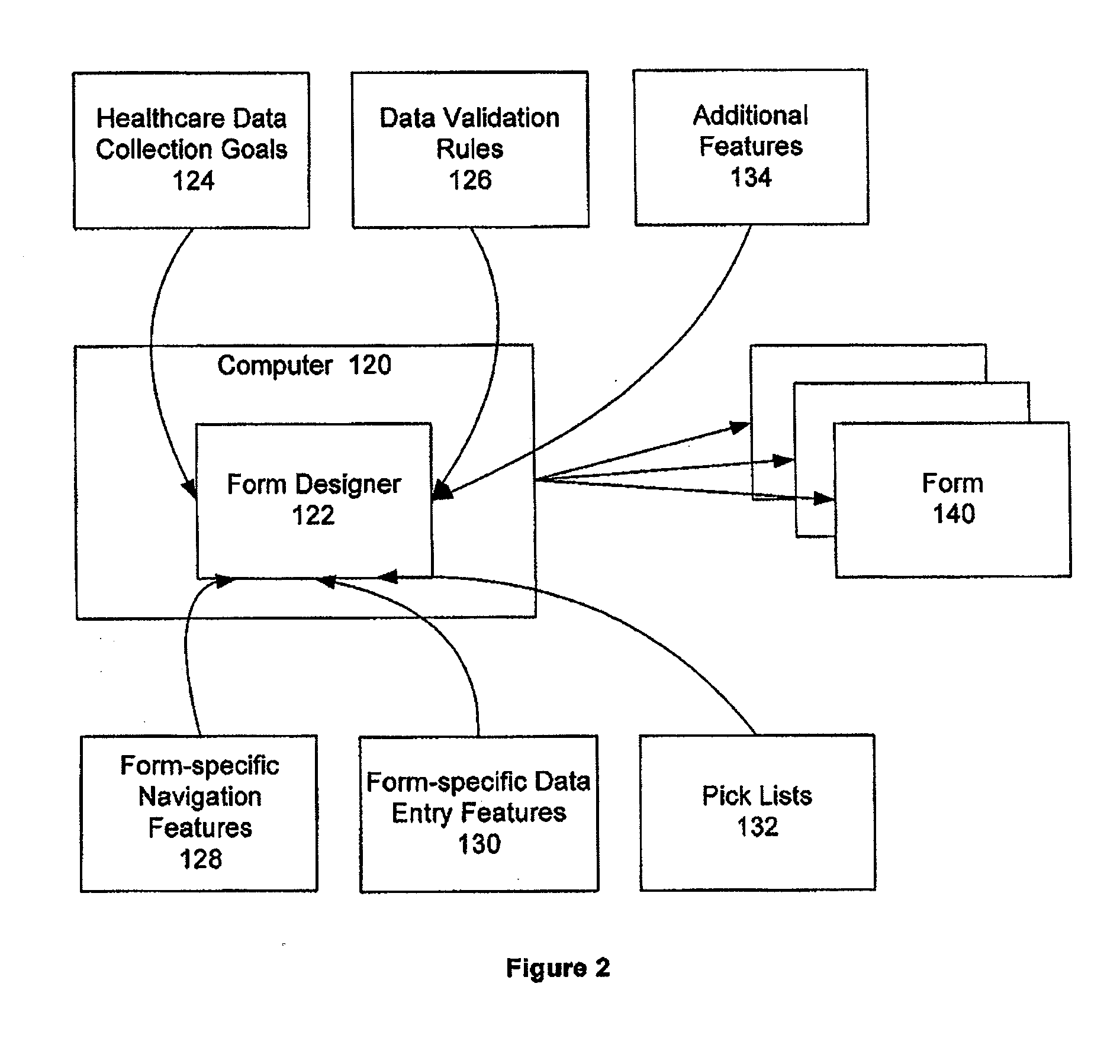System and method for data collection and management
a data collection and management system technology, applied in the field of data management, can solve the problems of inefficient paper-based data collection processes, current paper-based processes pose potential legal liabilities for healthcare institutions, and are still ubiquitous in hospitals, so as to reduce data collection errors, improve overall efficiency, and collect data efficiently and instantly validate
- Summary
- Abstract
- Description
- Claims
- Application Information
AI Technical Summary
Benefits of technology
Problems solved by technology
Method used
Image
Examples
Embodiment Construction
[0043]Within the healthcare industry, the need for healthcare institutions, such as hospitals, clinics, physician offices and other health-related facilities to collect high-quality patient and other data is of paramount importance. However, the need to accurately collect such data, combined with the limited resources of many institutions, has caused considerable strain in the industry as governmental agencies, HMOs, healthcare payors, and accrediting bodies nationwide place increasing demands on those institutions to ensure the quality of their data. Today, inefficient paper-based data collection processes are still ubiquitous in hospitals. It is common for the same piece of clinical information or patient data to be collected multiple times by multiple people, and in multiple different hospital departments, during the course of a patient's hospitalization.
[0044]Described herein is a system and method for collecting, validating, managing, and sharing data, for example healthcare an...
PUM
 Login to View More
Login to View More Abstract
Description
Claims
Application Information
 Login to View More
Login to View More - R&D
- Intellectual Property
- Life Sciences
- Materials
- Tech Scout
- Unparalleled Data Quality
- Higher Quality Content
- 60% Fewer Hallucinations
Browse by: Latest US Patents, China's latest patents, Technical Efficacy Thesaurus, Application Domain, Technology Topic, Popular Technical Reports.
© 2025 PatSnap. All rights reserved.Legal|Privacy policy|Modern Slavery Act Transparency Statement|Sitemap|About US| Contact US: help@patsnap.com



